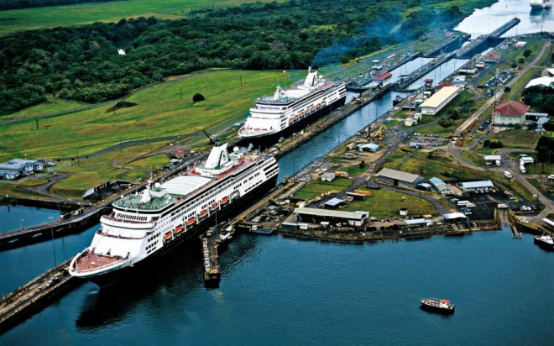As one of the world's most important trade routes, the number of ship transits in the Panama Canal has decreased by 36% compared to normal levels last year. A severe drought that began last year forced Panamanian authorities to restrict flows in the canal.
On Wednesday (Jan. 17), Panama Canal Authority Director Ricaurte Vásquez said the authority would adjust the number of ship transits to 24 times per day. Under normal circumstances, the number of boat crossings per day reached 38 times.
Vásquez added that in the first quarter of the current fiscal year (October-December 2023), cargo traffic in the canal was 20% lower than in the same period last year, with 791 fewer vessels, which is a reduction "significant for the country." ".
In addition, the ship transit adjustment plan announced on Wednesday by the Panamanian authorities will have a greater impact on the economy than expected.
Canal managers now estimate that falling water levels could cost them between $500 million and $700 million by 2024, up from a previous estimate of $200 million.
Central American countries have been hit by one of the worst droughts on record since last year, throwing this 50-mile shipping route into disarray, causing ship traffic jams and raising concerns about global shipping and trade impacts.
The canal authority attributed the drought to the El Niño weather phenomenon and climate change and warned that Panama urgently needed to find new sources of water for canal operations and human consumption.
"We will take action to find solutions to the water problem," said Vásquez, who stated that more efficient water management and increased rainfall in November will ensure that water levels are high enough for April, the next rainy season.
Under normal circumstances, the Panama Canal handles about 3% of global maritime trade and 46% of containers from Northeast Asia to the East Coast of the United States. The canal is Panama's largest source of income, generating $4.3 billion in 2022.
To allow the passage of up to 24 ships per day during the dry season, the canal will release water from the Alhajuela reservoir. Córdoba said if rains begin to increase in May, the canal could begin to increase traffic.
But these are short-term solutions. In the long term, the main solution to the chronic problem of water scarcity is to dam the Indio River and then drill a tunnel through the mountain to transport fresh water 8 kilometers away to the Gatún Reservoir, the canal's main reservoir.
Córdoba estimates that this project and other water conservation measures will cost around $2 billion. He said it would take at least six years to build the dam and fill the site. But moving forward with the proposal will not be easy. He requires approval from Congress and thousands of farmers and ranchers have organized to oppose it because the reservoir would flood their lands.
Coupled with the intensifying Red Sea crisis, international shipping is under unprecedented pressure, carriers will spend more time and costs to complete cargo delivery.
Source:https://www.eastmoney.com/
Written by Victoria
